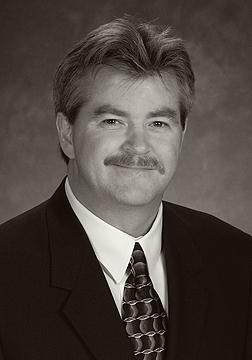Lions, and Tigers and Bears, Oh My!
Since I am a relative new-comer to the world of blogs, playing catch-up is a constant exercise. Lately I've been reading more and more on the concept of bandwidth and the need for multiple tiers of service. My healthcare-system-centric view of the world forces me to consider how this may be affecting the concept I've focused on in this blog. Which is: What we are experiencing as a Healthcare Crisis is really the transformation of our Healthcare System from an older, more established paradigm to an emerging, new paradigm for delivering healthcare. So what got me interested in bandwidth?
Maverick Ideas
There is a very good chance that the only reason you are reading this blog is because you stumbled across it on your way to something else. Be honest, you know it's true. I tend to find a lot of interesting things that way on the internet. I ran across a blog Mark Cuban wrote on the subject of bandwidth and immediately started wondering how this could affect the future of Healthcare. His discussion focused on "multiple tiers of service" and the development of "HOV lanes" or "toll roads" within the bandwidth to access these services. The idea is that there needs to be "mission critical reliability" for "mission critical applications". In a recent blog of his I commented that this may mean the bandwidth equivalent of "911 lanes" for "medical service lines". I'll leave the discussion and debate of creating tiers for bandwidth traffic to the more informed minds, but I couldn't help but wonder what role this may play in an emerging, new paradigm for delivering healthcare.
Out With The Old And In With The New
There is a steady drumbeat of support in this country for the idea that our Healthcare System is in ruins and is crumbling before our eyes. I have a different opinion. What is crumbling before our eyes is the old paradigm. At its foundation is the patient-physician relationship. Physicians have been the gatekeepers to the information and services this great system can provide. What if the nature of that traditional, established role was being challenged? I believe that is what is happening and it makes for some unsettling times. Some might call it a crisis. Changing a model for delivering healthcare is not going to be an easy or very comfortable experience for those of us in the trenches. Access to healthcare information and services are already beginning to become available through alternative venues. I think this is just the beginning of the challenge to the old paradigm.
It's Only the Beginning
Nurse Practitioners and Physician Assistants are beginning to independently provide basic Primary Care health services through outlets such as MinuteClinic, and Medspot. More are sure to come. To further improve access to healthcare services patients can now get advice over the phone via Dial-a-Doc or place an order over the internet for their pharmaceutical needs via Kwik-Med. This is to say nothing about the vast archives of information on medical research available on the world wide web. Despite growth in the cost of healthcare I think these are subtle but very real trends for the future of healthcare. All seek to improve access, decrease costs and provide services for, what Clayton Christensen refers to as, "overshot customers" using "disruptive innovation".
The Anywhere-Anytime Healthcare System
The convergence of easy access to: low cost providers, service selection and real-time availability to health information technology points to the internet. It is becoming apparent that not all healthcare needs require an appointment in a Physician's office or even a Physician. I've discussed this in a previous blog. What if we could not only access a "Provider" anywhere-anytime but also have that visit immediately recorded in our healthcare record? I'm not talking about a real walk-in clinic, but a virtual walk-in clinic. It would be open 24/7 and available wherever and whenever you can access the internet. Medical service lines would be offered much like cable TV channels or pay-for-view programming. If you have a relatively minor, but urgent healthcare need you can access a virtual provider via the internet. The Healthcare Tier you subscribe to will determine the level of interactivity you will have with your virtual reality provider. Customized packages can also be included to further enhance the experience. All information on the virtual visit would be stored in a personal health information record via the National Health Information Network.
Do We Need Emergency Lanes for the National Health Information Network?
With the anticipated growth of bandwidth use, the question remains: Will there be a need for "911" or emergency lanes within the bandwidth for those with pressing healthcare needs and is this going to be a "mission critical application"? My guess is that if it reduces the number of those with non-urgent/non-emergent needs in the Emergency Department and Physician's office waiting rooms then it will be worth the investment. The key is to not only provide access to the service but deliver it at a markedly reduced cost. The other potential bonus is that with improved access and low cost people will seek advice earlier in the course of a disease and, with any hope, avoid the catastrophic effects of late intervention. Virtual Providers could not only treat minor health problems but also get patients into see Physicians earlier in the course of a disease where they can be maximally effective. Now that is what I call mission critical.
Subscribe to:
Post Comments (Atom)

No comments:
Post a Comment